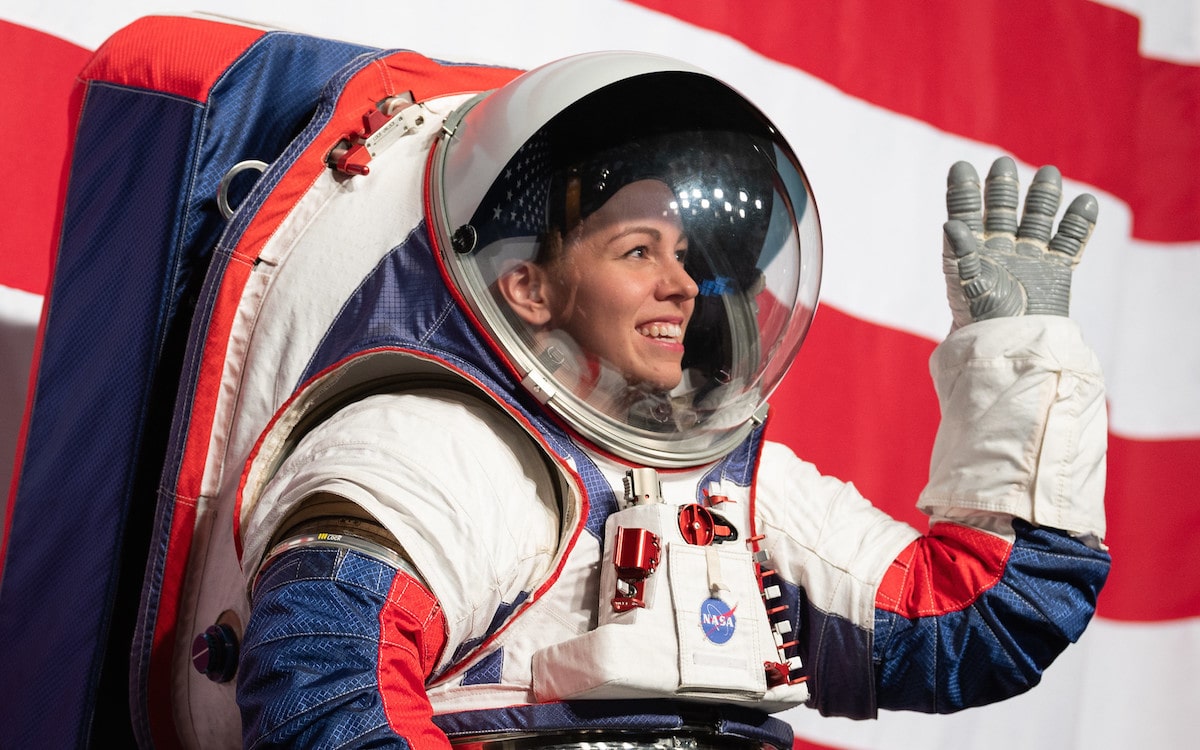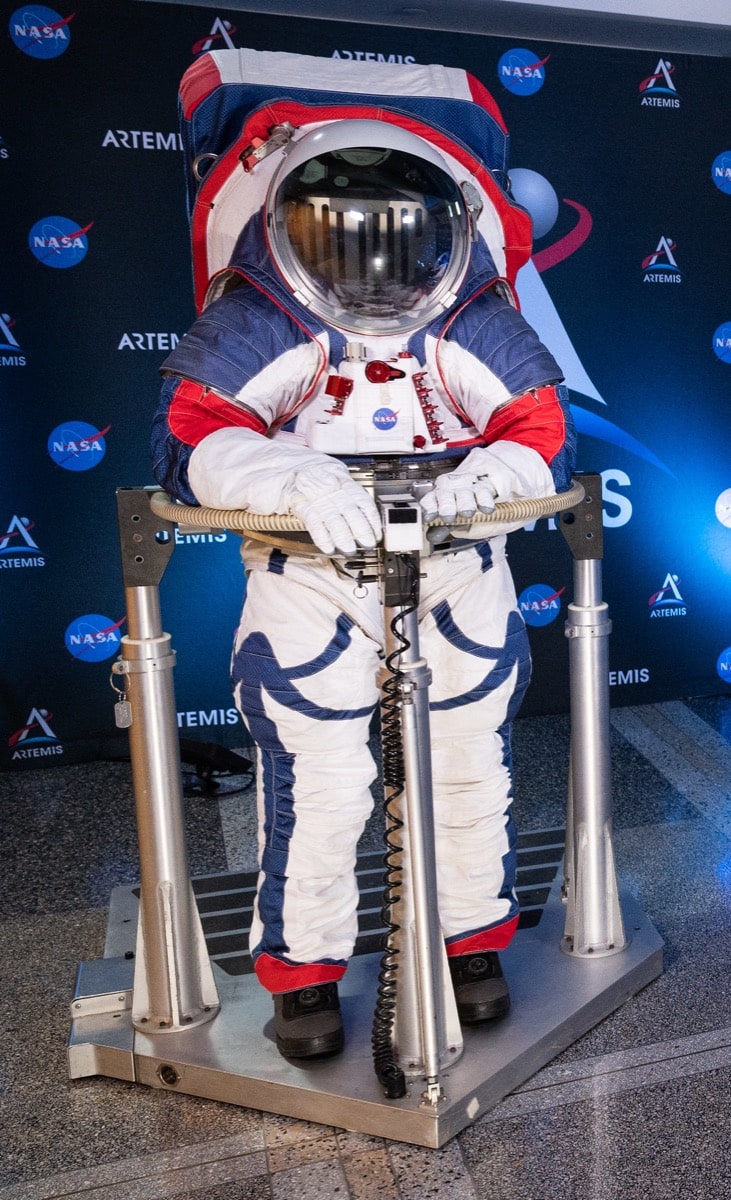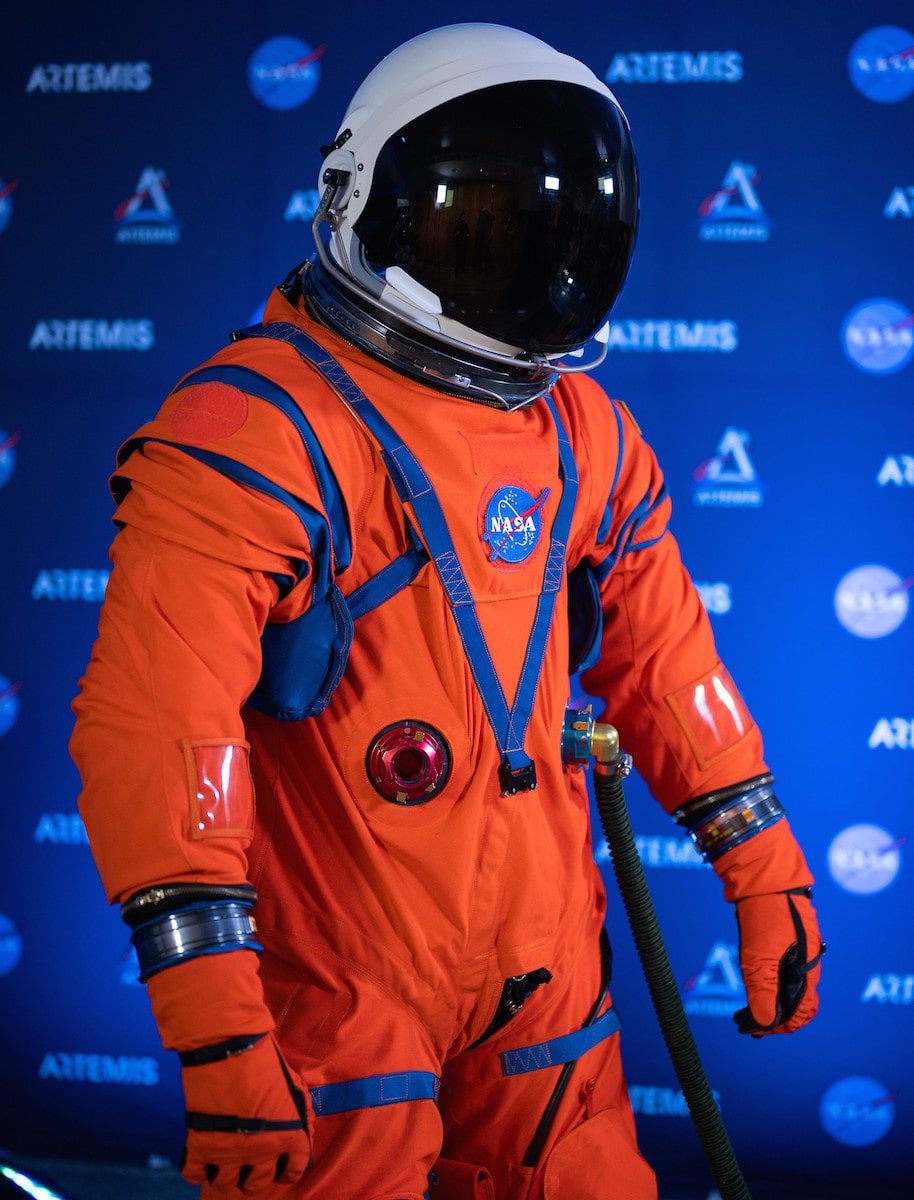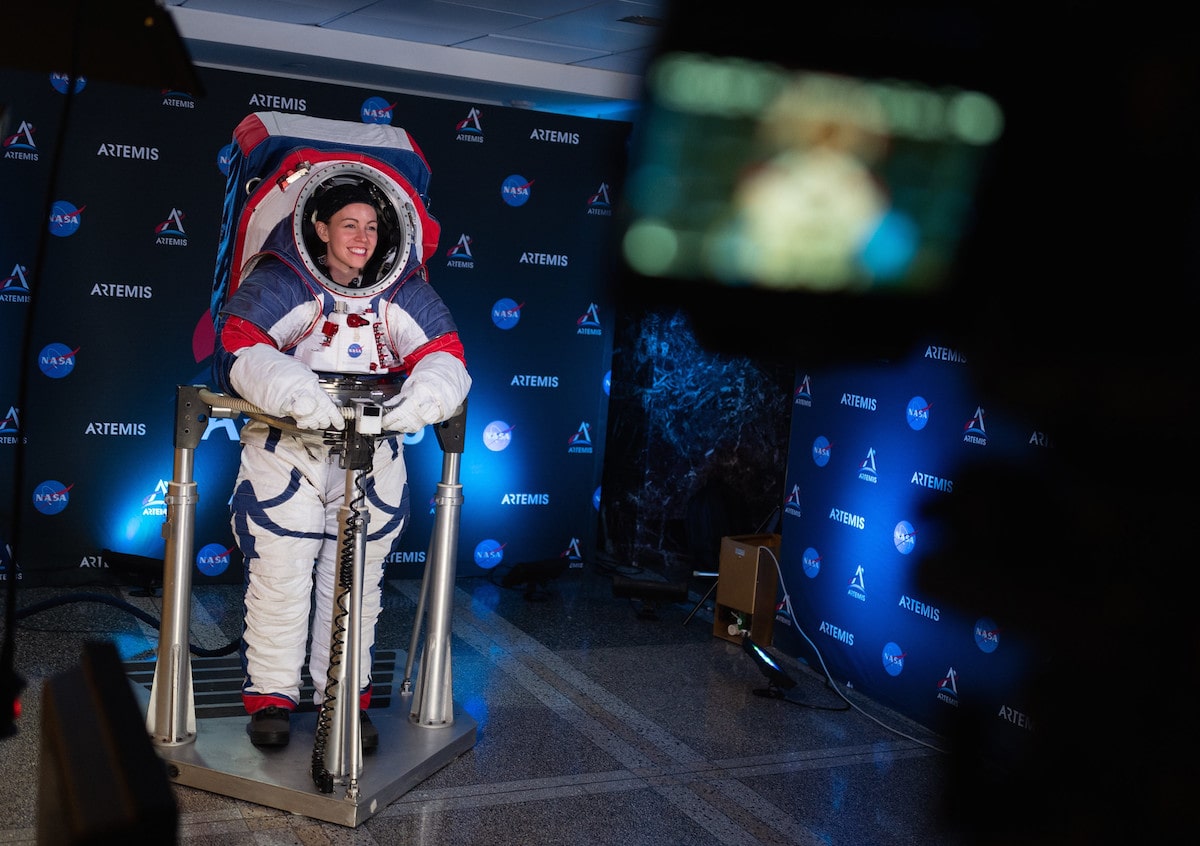We Choose To Go To The Moon… But When?
13:31 minutes

This week, a congressional hearing examined NASA’s plan to return humans to the moon by 2024—and some Appropriations Committee members didn’t seem particularly bullish on the idea. New York Representative José E. Serrano had this to say:
Since NASA had already programmed the lunar landing mission for 2028, why does it suddenly need to speed up the clock by four years—time that is needed to carry out a successful program from a science and safety perspective. To a lot of Members, the motivation appears to be just a political one—giving President Trump a moon landing in a possible second term, should he be reelected.
In this segment, Eric Berger, a senior space editor at Ars Technica, talks with Ira about the implications of that hearing.
Plus, as it rushes to meet that 2024 deadline, NASA this week unveiled a new spacesuit, tailor-made for strolling on the lunar surface. Amy Ross of NASA Johnson Space Center led the suit’s design, and she joins Ira here to talk about its capabilities—and why a puffy suit is still necessary, rather than a tighter design depicted and described in films like The Martian.
See photos of some of the newly designed spacesuits featured at NASA’s showcase below.



Invest in quality science journalism by making a donation to Science Friday.
Eric Berger is Senior Space Editor at Ars Technica. He’s based in Houston, Texas.
Amy Ross is the lead for the xEMU pressure garment at NASA Johnson Space Center in Houston, Texas.
IRA FLATOW: Earlier this week, the House Appropriations Committee held a hearing on our collective space future. Under discussion was the Trump administration’s goal to get human boots back on the moon by 2024, a full four years faster than the previous deadline of 2028. And let’s just say some of the committee members, including New York representative José Serrano, didn’t seem particularly enthusiastic about the plan.
JOSÉ SERRANO: Since NASA has already programmed the lunar landing mission for 2028, why does it suddenly need to speed up the clock by four years– time that is needed to carry out a successful program from a science and safety perspective. To a lot of members, the motivation appears to be just a political one– giving President Trump a moon landing and a possible second term, should he be reelected.
IRA FLATOW: That was representative José Serrano of New York. Joining me now with more on this budgetary spat is Eric Berger, senior space editor at Ars Technica. He joins us from Houston Public Radio. Welcome to Science Friday.
ERIC BERGER: Thank you very much, Ira.
IRA FLATOW: You’re welcome. Eric, unpack what happened at this hearing for us.
ERIC BERGER: Right. So every year, during the budgetary process, both the House and the Senate Appropriations Subcommittees for NASA sort of have hearings to discuss what NASA is going to do with their budget. This year, the House already did that. The House subcommittee already did that, but then NASA came back and said, well, we’ve got this Artemis program, and as part of this plan to land humans on the moon in 2024, to bring that forward four years, we’re going to need more money. Now this year, we only need $1.6 billion. And so that was a supplementary budget request.
And so other things have been happening in Washington this year, but they finally sort of brought the administrator back before the committee this week to discuss it. And needless to say, José Serrano, who you heard from there, was quite skeptical about sort of the technical merits of the 2024 date.
IRA FLATOW: He said the launch timeline was a political one, right? A nice way for President Trump to cap off his second term, should he be reelected.
ERIC BERGER: Yeah.
IRA FLATOW: But NASA started in the age of politics, didn’t it? The Apollo mission.
ERIC BERGER: Yeah, absolutely. NASA has always been political program. It certainly has great technical achievements, but its policies are set by the White House and it’s funded by Congress. So it is necessarily a political creature. Whether this date truly was a political date, 2024 is certainly open for debate. I think the administrator is right when he talks about NASA needs a sense of urgency. A goal of landing humans a decade from now is really quite a long time. And so will we really stick to that goal, or will it continue to slip? So there were some good reasons to bring the date forward.
IRA FLATOW: I’m Ira Flatow. This is Science Friday from WNYC Studios, talking about NASA in space with Eric Berger from Ars Technica. President Trump wanted to peel money away from the Pell Grant program, which gives money to low income students to attend college, and put that money into the NASA budget instead. I’m betting that was not a popular move.
ERIC BERGER: That was really a critical mistake. And the question is whether that was an unforced error or whether that was deliberately done. As you know, the politics get pretty complicated in Washington, DC, but there are certainly elements of the White House’s Office of Management and Budget. They set the national budget for the White House. And they were not particularly keen on taking on a new program, which, although it was only going to cost $1.6 billion in the coming fiscal year, that clearly was going to balloon in coming years to maybe $6 to $8 billion additionally per budget. And so there was some thought that maybe they found the extra money this year in the Pell Grants to kind of be a poison pill.
IRA FLATOW: Well, is there anywhere else the money could come from? Is there a deal that could be made?
ERIC BERGER: So José Serrano, the New York representative, offered such a deal to [INAUDIBLE] who, admittedly, does not have the power to make these kinds of budgetary deals. But he basically said, look, we would be having a very different conversation today if the president came forward and said, well, this year, instead of using the money for the wall, I’d like to use it to accelerate the moon program. I think that instead of having something divisive like the wall, having something unifying like a major space program goal would be a good thing. But obviously, that’s unlikely to happen.
IRA FLATOW: Has the president tweeted anything about this whole–
ERIC BERGER: Well, he has not tweeted. But today, he did call up to the International Space Station because for the first time, two women astronauts were outside conducting a spacewalk. And so in the middle of the EVA, he sitting in the White House next to Ivanka and the vice president. And he called up, and all he really said related to this was that, look, we’re going to the moon and then we’re going to launch from the moon and go to Mars, which was kind of an interesting statement.
IRA FLATOW: So he sort of didn’t wade into this problem, but this idea is not going away, this spat about the money.
ERIC BERGER: No, it’s not. And what is probably going to happen is they’re not going to get all the funding they need this year. And so instead of being able to start on construction of lunar landers, because really, the big technical piece here is you need something to take a cruise safely down from lunar orbit to the surface, allow them to live on the surface of the moon, and safely blast off back up to the moon. And that system, it all has to work or they die. And so it’s really a big technical problem. And to make the 2024 date, they really have to start building those by the end of this year.
IRA FLATOW: Wow. That has not happened. Stay with us, Eric, OK? We’re going to take a break and come back and talk about not only getting to the moon, but what the well-dressed astronaut might wear on the moon. Because a new space suit design was revealed this week, and it looks a lot puffier. And then [INAUDIBLE] remember that Stay Puft Marshmallow Man in the movie? A little bit looks like that.
We’ll talk about it. Eric will be back. We’ll also bring on Amy Ross who led the team that designed the suit, the Exploration Extravehicular Mobility Unit– NASA loves these acronyms– xEMU. We’ll talk about it after the break. Our number, 844-724-8255, if you’d like to comment. Stay with us. We’ll be right back.
This is Science Friday. I’m Ira Flatow. We’re talking about NASA’s next moon shot, whether it’ll happen in 2024 as the Trump administration has moved up that date or in 2028, which some members of Congress are holding fast to. Still with me is Eric Berger, a senior space editor at Ars Technica. And when we land on the moon, of course, we’re going to need the proper outfits. You can’t just pull on those old Apollo spacesuits out of the closet, get them on.
Nope, designers and engineers have been hard at work, and they unveiled the prototype of the next moon suit this week. We have pictures up on ScienceFriday.com/spacesuit. Amy Ross led the team that designed the suit, which is formerly called the Exploration Extravehicular Mobility Unit, or the xEMU pressure garment. Amy Ross is based at Johnson Space Center in Houston. Welcome to Science Friday.
AMY ROSS: Thank you very much for having me here, Ira.
IRA FLATOW: I hope you didn’t take offense to me comparing it to the Stay Puft Marshmarllow Man. It was just a joke. It’s not really that. But it is a little bit–
AMY ROSS: We hear that a lot.
IRA FLATOW: Yeah. Why do people think it looks like that? It is kind of baggier or puffier, isn’t it, than the old Apollo suit.
AMY ROSS: Actually, it’s based on the same idea. It’s an inflated balloon around a human. And especially when you start getting smaller subjects in there, and they start to get as wide as they are tall, then it looks a little bulky.
IRA FLATOW: So why is it designed differently than the ones that went up to the moon in Apollo?
AMY ROSS: Well, the Apollo suit had to do multiple jobs throughout the mission. They only had room and mass capability for one suit. And so it was a crew survival suit, what you saw in the presentation from NASA on Tuesday, the orange suit, which is very different from an extravehicular activity suit, which is what my suit is. And so when you get to specialize, you can be much more capable in the function you’re supposed to perform. And so we were able to build in a lot more mobility into the suit using bearings than they were able to do during Apollo.
IRA FLATOW: Eric, what are your thoughts on the new space suit?
ERIC BERGER: Well, I really have a deep appreciation for what NASA is trying to do in building a spacesuit. And think about someone like Amy who is in charge of designing spacesuits. The problem for her and for NASA is that the mission keeps changing. So a decade ago, it was to go to the surface of the moon. And then it changed, and it was to visit an asteroid. So that’s a very different space suit in terms of going to the lunar surface and then sort of doing an EVA out of a ship and sort of hopping over to an asteroid. And then the mission was to go to Mars, and now the mission is to go to the moon and then to Mars.
And so these are all kind of very different designs for this spacesuit. And so I think this is probably a perfectly capable space suit for the moon. The question is, if we change our direction again to go to Mars, will it have to be all redesigned again?
IRA FLATOW: Amy, do you think you’re going to be rushed at all by this 2024 timeline that the president wants now?
AMY ROSS: Well, we’ve been working in this direction for a long time, and we’ve always kind of had our eyes further out, working on a Mars suit. And so to meet a 2024 timeline, yeah, once you actually have to build flight hardware, it’s always a little intense. But we believe we can make that timeline. Yeah, we do.
IRA FLATOW: What do you think the biggest– if I were coming in for a try on, what’s the biggest selling point of your new suit?
AMY ROSS: Well, what we’ve been doing is working with scientists, folks like geologists who are going to go understand where the moon came from, what’s there now, what the resources are, and make sure that they could do the job they want to do in our hardware. Because the suit is just a tool for the astronauts, and so it should just be another means of them getting their job done.
IRA FLATOW: Mm-hmm. Is this going to have the same kind of fittings? We used to watch the astronauts take off their gloves, and it had a lock into place and things like that. Will it have those fittings, or are they going to be more soft like?
AMY ROSS: No. In general, when you have those disconnects, they tend to be metal components. Some of them are shockingly similar to what we used in Apollo, and some of them are new based on new requirements.
IRA FLATOW: Mm-hmm. And how much easier will they be to get in or out of?
AMY ROSS: Well, so right now, we say it’s easier. But as you use a thing, you start to understand what more and more of the problems are. So as we go forward in our testing this coming year and then certification following that, we’ll learn more of the problems. But so far we’ve been testing these reentry suits for most of my career, 20 plus years, and we think that they are. I find them to be pretty easy to take on and off.
IRA FLATOW: So considering that we’re thinking about building a moon base and working on the moon, and this suit will be, more or less, for working terrestrially, walking around on the moon.
AMY ROSS: Yes, but it’s also capable of doing microgravity EVAs. We’ve done testing in our neutral buoyancy laboratory, our giant swimming pool. And they’re good at doing that, too.
IRA FLATOW: Mm-hmm. Eric, there’s news that Japan is teaming up with us to help build a moon base in some capacity. Is that true?
ERIC BERGER: Yes, Japan has been a very close ally to NASA in its human exploration efforts. And the administrator, Jim Bridenstine went there earlier this fall, basically, for almost a week and visited their facilities. And just today, I think the prime minister of Japan sort of signed off on the country’s participation both in the Lunar Gateway, which is the plan to have a space station at the moon from which to go down to the surface the moon, and then sort of participate in lunar EVAs. And this is a pretty good thing for NASA because they certainly need international partners if they are to carry this forward. It helps sort of build the political will to stick to these kinds of programs.
IRA FLATOW: Amy, do we know how close you are to coming up with a final design? I understand it’s not going to be the colorful one that you showed off because it needs to be white to reflect the sunlight and the heat. And who you’re partnering with, isn’t it true that Playtex made the original spacesuits?
AMY ROSS: They had built the Apollo spacesuits, but we have had various companies and contractors that we’ve worked with through the years. And in this case, we believe that the suit will be done. The design will be set next year. And then it’s just a matter of building them and qualifying them for spaceflight.
IRA FLATOW: All right, thank you both for taking time to be with us. We’ll wait to see it. Amy Ross led the team that designed the new moon suit, otherwise known as the EMUx at the Johnson Space Center, or you can turn that around to be the xEMU. Eric Berger, senior space editor at Ars Technica. We had a link to Eric’s article about NASA’s budgetary battles, and we have photos of the moon suit there up at ScienceFriday.com/spacesuit.
Copyright © 2019 Science Friday Initiative. All rights reserved. Science Friday transcripts are produced on a tight deadline by 3Play Media. Fidelity to the original aired/published audio or video file might vary, and text might be updated or amended in the future. For the authoritative record of Science Friday’s programming, please visit the original aired/published recording. For terms of use and more information, visit our policies pages at http://www.sciencefriday.com/about/policies/
Christopher Intagliata was Science Friday’s senior producer. He once served as a prop in an optical illusion and speaks passable Ira Flatowese.
Ira Flatow is the founder and host of Science Friday. His green thumb has revived many an office plant at death’s door.